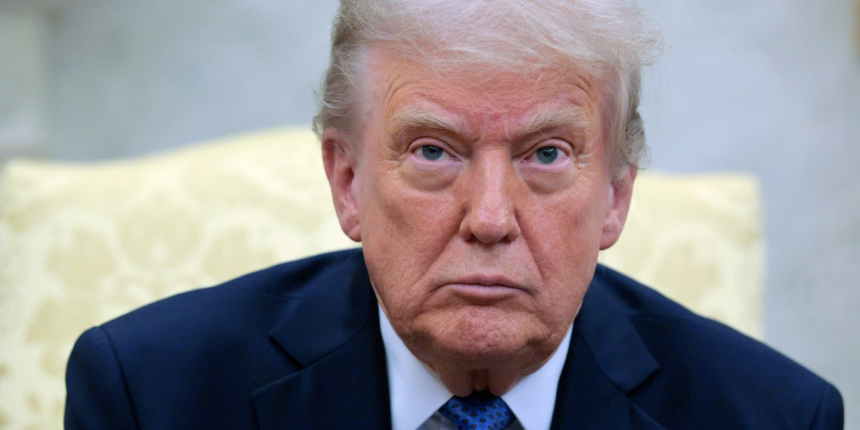Around the 100-day mark of his second term, investors who took him literally — and bought the precious metal — have been richly rewarded.
Those who took him seriously, however, and loaded up on U.S. equities and the dollar, have been disappointed, as have buyers of Treasuries, who have even seen the haven status of U.S. debt thrown into doubt.
Rather than the new administration firing up U.S. economic and market dominance with a bevy of tax cuts and deregulation, a firehose of tariffs and geopolitical uncertainty has generated some of the most extreme market swings in recent history.
The market standouts? Gold, the ultimate safe haven, has soared to a record, while Bitcoin, despite declining this year, has largely held onto post-election gains on optimism for crypto-friendly policies under Trump.
Here’s a market-by-market look at Trump’s first 100 days:
Despite recent stability, the S&P 500 Index is down about 8% since his inauguration and on pace for its worst run during a president’s first 100 days since president Ford in 1974, following Richard Nixon’s resignation.
“It was an extreme, for-the-textbooks, systematic risk in its purest form,” said Mark Malek, chief investment officer at Siebert. “The volatility has been wholly different from anything we have experienced in the past, and it indiscriminately spread through all sectors and asset classes like a wildfire, constantly being fueled by random sound bites and shifting policy moves.”
Bitcoin, the star asset of Trump’s pro-crypto presidential campaign, has struggled to keep up its momentum.
Despite early enthusiasm, the largest digital asset is down more than 7% since Trump’s inauguration, even after major policy wins for the broader industry, according to data compiled by Bloomberg.
Trump vowed on the campaign trail to ensure that all remaining Bitcoin is “made in the USA” and to establish a Bitcoin reserve. The president was once a crypto-skeptic, but became an ardent supporter during the election, as digital-asset organizations ramped up their involvement in U.S. politics through sizable political donations.
Bitcoin prices are still more than 30% higher than pre-election levels. “The market was quick to price in the pro-crypto environment in November, but since then has been somewhat captive to broader equity and bond market weakness as tariff policies started being announced,” Galvin said.
The U.S. dollar index has lost about 9% since Trump returned to the White House, putting it on course for the biggest loss through the end of the month since the early 1970s — when the U.S. abandoned the gold standard and let the dollar float freely.
The president’s first 100 days in office in recent decades have been marked by strength in the currency, with returns averaging close to 0.9% between 1973, when Nixon began his second term, and 2021, when Joe Biden took office.
Under Trump, the $7.5-trillion-a-day foreign-exchange market has been whipsawed by tariff U-turns and social media posts. Every other major currency tracked by Bloomberg has gained against the dollar since the inauguration, led by the Swedish krona, Swiss franc and euro.
Even the Mexican peso and Canadian dollar have strengthened versus the U.S. currency since Jan. 20, with Trump’s most-aggressive trade threats tempered by delays and negotiations.
The most dramatic moves in decades swept through the $29 trillion Treasury market in the past 100 days.
Treasuries rallied, sending the yield on 10-year notes as low as 3.86% in early April after Trump announced a wide set of tariffs on nearly all U.S. trade partners and spurred demand among investors for havens.
The market swings — fueled also by Trump’s rants against Federal Reserve Chair Jerome Powell — have called into question the haven quality of Treasuries, which have long been seen as the world’s “risk-free” asset. U..S government debt is used as a benchmark to determine the price of everything from stocks to sovereign bonds and mortgage rates, while serving as collateral for trillions of dollars of lending a day.
Oil has slumped and a darkening economic outlook wrought by the tariff war has played a big part.
At the same time, the Organization of Petroleum Exporting Countries and its allies have begun to restore supply in a seeming effort to clamp down on nations that have been cheating on output quotas.
Brent futures, which got as low as $58.40 a barrel in early April, are now trading at about $65.
Before Trump came to office they stood at just below $81. Importantly, weaker oil will help with Trump’s pre-election pledge to lower inflation, and to bring down fuel prices.









